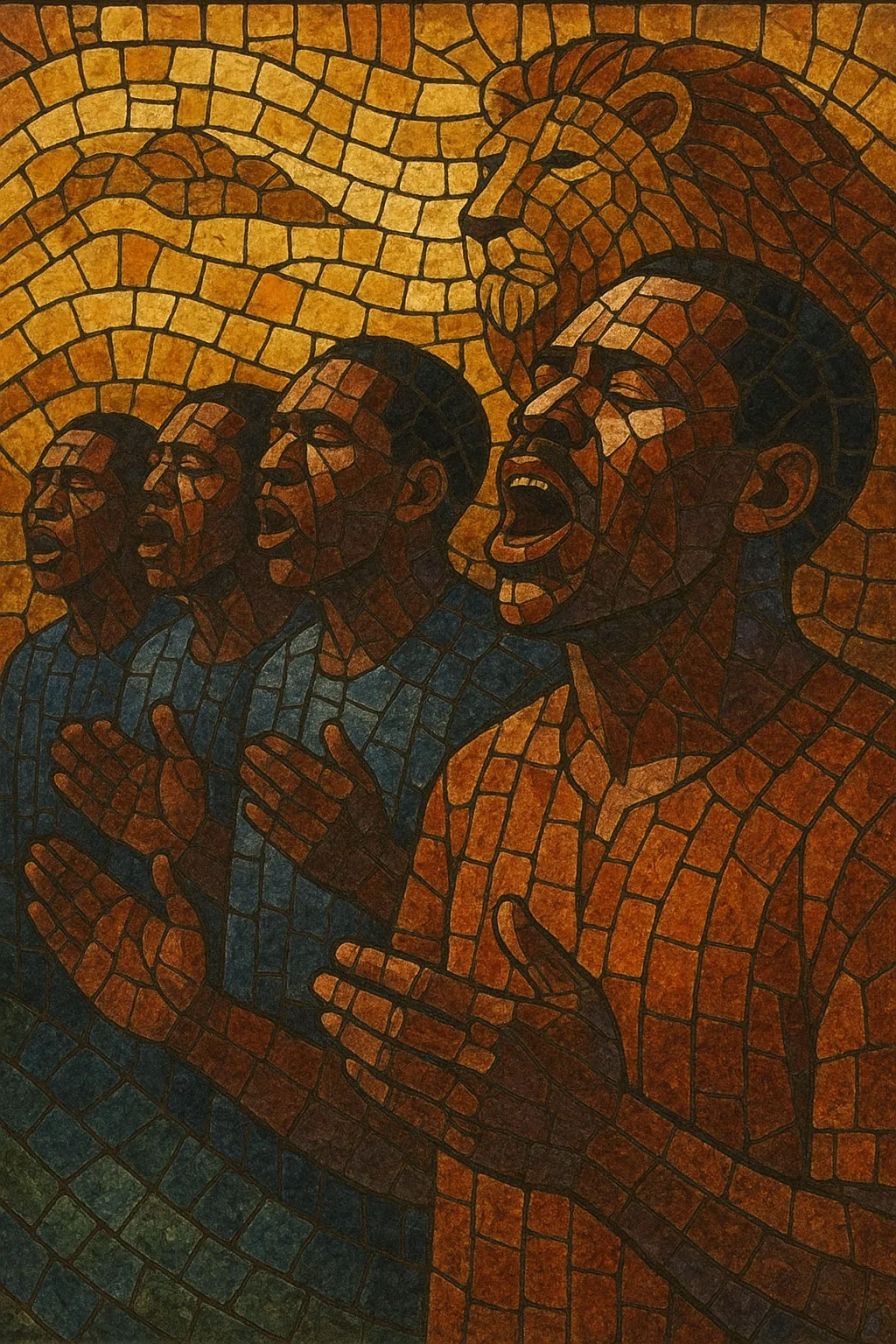Mbube is a powerful, male-led a cappella choral style that originated among Zulu migrant workers in South Africa. The word “mbube” means “lion” in Zulu, and the music reflects that spirit: full-throated lead vocals, a resonant bass foundation, and a strong, homophonic chorus.
The style typically features call-and-response between a charismatic lead singer and a tightly blended choir, cycling through simple, diatonic harmonies anchored by rich bass parts. Rhythmic unison stepping and coordinated movement reinforce the groove. While celebratory and communal, the songs often carry themes of longing, work, and home—memories shaped by migrant life.
Solomon Linda’s 1939 hit “Mbube” became the signature of the genre and the basis for later global adaptations (“Wimoweh,” “The Lion Sleeps Tonight”). Mbube later gave rise to the softer, more hushed isicathamiya style, but it remains a distinct, robust tradition with enduring cultural resonance.
Mbube emerged in the 1930s among Zulu migrant workers housed in urban hostels around Johannesburg and Durban. Influenced by mission-choral traditions (Christian hymnody and part-singing) and the call-and-response practices of African work songs, groups formed for evening recreation and friendly competition. In 1939, Solomon Linda and his group, the Original Evening Birds, recorded “Mbube” for Gallo Records. The song’s success gave the style its name and set its defining sonic template: a commanding lead voice over a deep, pulsing choral bed.
Throughout the 1940s and 1950s, hostel-based contests and community gatherings fueled a vibrant scene. Ensembles honed tightly coordinated harmonies, precise stepping, and a bold, resonant sound that would distinguish mbube from other vocal forms. The music became a vehicle for community pride, storytelling, and social cohesion among workers far from home.
The melody of “Mbube” traveled worldwide when The Weavers adapted it as “Wimoweh” (1951) and later The Tokens popularized it as “The Lion Sleeps Tonight” (1961). These versions introduced audiences to the mbube sound, though credit and royalties were long disputed. In the 2000s, legal action brought renewed recognition to Solomon Linda’s authorship and resulted in a settlement benefiting his family, cementing mbube’s place in global music history.
From the 1960s onward, a quieter, more breath-controlled variant—isicathamiya—rose to prominence (exemplified by Ladysmith Black Mambazo). While isicathamiya became internationally celebrated, mbube retained its identity as the genre’s robust, lion-like origin. Today, mbube continues in South Africa and beyond (including Zimbabwean “imbube” ensembles), shaping world vocal music and inspiring contemporary choral and a cappella traditions.


